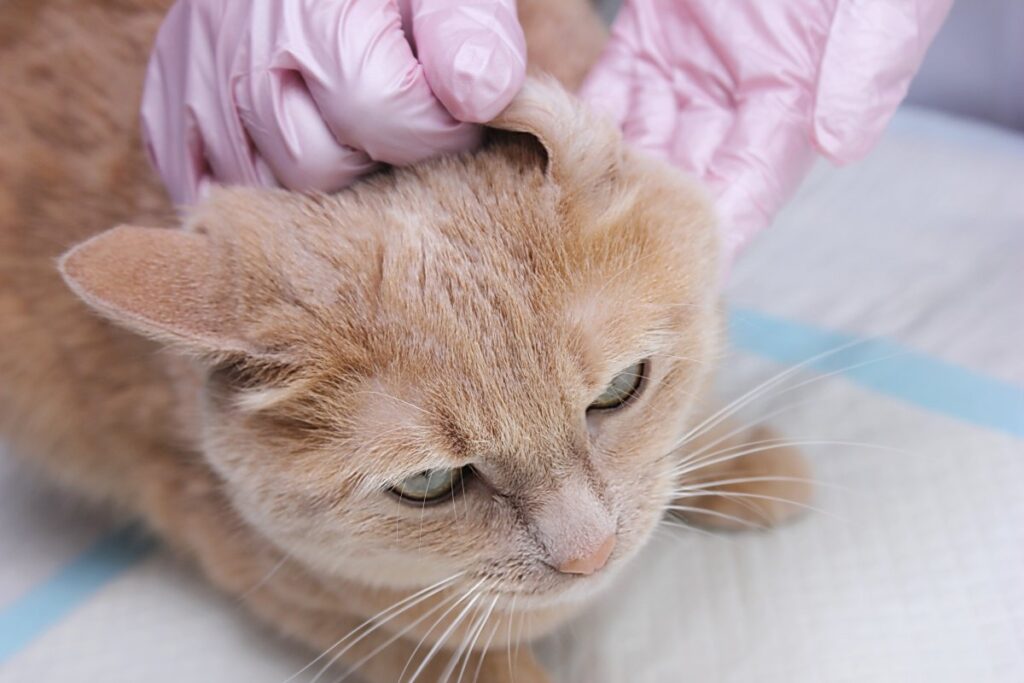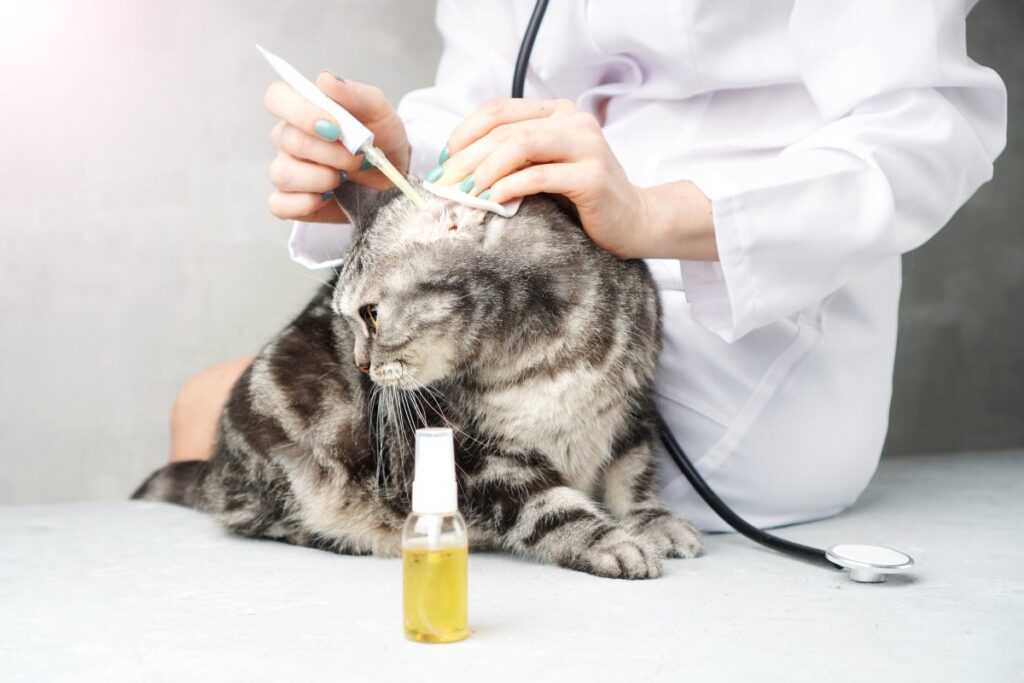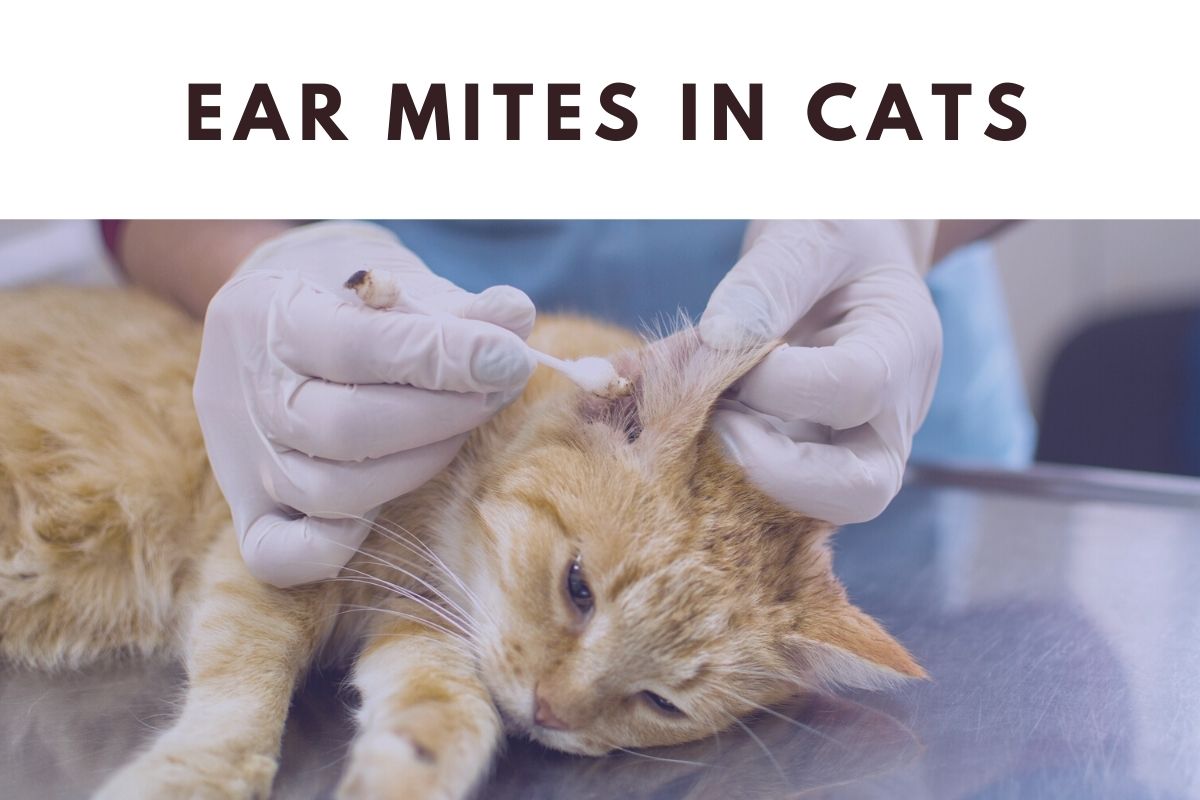Is your cat scratching their ears more than usual? Do you detect any differences in your cat’s ears? If yes, your feline buddy may be suffering from one of the most frequent cat ear issues. If your cat’s ear condition becomes too severe, you may need to take your cat to the veterinarian.
It’s essential to recognize the most frequent ear problems cats can have and the signs to check for. If one or more ear problem symptoms are observed, it is always an excellent idea to take your cat for an ear evaluation.
To know more about cats’ ear mites, keep reading!
What Are Ear Mites?
Ear mites are a type of worm that resides in the earholes of pets. These minor pests can be pretty unpleasant to your cat, causing them to scratch their ears. Rough rubbing and jerking their body in annoyance might inflict more injury to the cat than the mites.
Ear mites are parasites frequently found in cats, and they rely on dead skin and ear mucus. Mites can sometimes be observed as tiny white particles with the human eye in severe infestations. Most of the time, they are discovered under a lens when studying a specimen of ear wax.

What Causes Ear Mites in Cats?
Ear mites are infectious diseases and quickly passed from one cat to another via close interaction or even an object. If one of your cats has mites, it’s a safe assumption that the other pets in your house also have mites.
- Since rescue cats live in such tight proximity, they frequently require therapy.
- Outdoor cats are more prone to come into touch with diseased cats.
- Indoor cats are susceptible to catching ear mites from other pets in the house.
- Ear mites harm kittens more than senior cats.
Since ear mites are so prevalent, you’ll undoubtedly need to medicate all animals in your family if one is diagnosed with them. Ensure you separate affected cats until treatment is completed, then thoroughly clean their beds and objects to eradicate any remaining mites.
Signs and Symptoms of Eat Mites in Cats
The signs your cat displays are the most straightforward approach to discovering ear mites. Prominent ear mite symptoms may encompass:
- A pungent stench emanating from the ears
- Constant itching of the ears
- Excessive reactivity when people try to touch their ears
- Fluid discharge that is dark in color
- Loss of fur from around the ear
- Torn blood vessels or open sores as a result of your cat rubbing their ears
Recognizing the indications of an ear mite infection is the most uncomplicated technique to search for ear mites. After that, you can take your cat to the veterinarian to have it inspected adequately for ear mites.
How to Check Ear Mites in Cats?
Common medical indications, together with a record of interaction with other animals, would point to the presence of ear mites. Although ear mites are responsible for almost half of all cat ear disorders, other infections can produce identical indications. They must be cleared out before initiating therapy.
A veterinarian examines the mite to diagnose the condition. This is relatively simple and can be accomplished by evaluating the cat’s ears or microscopic study of ear secretions. If the ears are extremely painful, the cat may need to be anesthetized so that the ears may be inspected and dealt with appropriately.

Ear Mite Treatment for Cats
If ear mites cause your cat’s itching ears, there are several ways to eliminate these pesky parasites. Modern prescription drugs from veterinarians can clear ear mite pest infestation with a single treatment and are the quickest and most productive method.
All treatments for ear mites begin with carefully cleaning the ears. Once the wax, sticky secretion, and other waste in the ear are gone, medicine might be used to eliminate the infection and prevent it.
Suppose there is injury or swelling in the ear. In that case, the vet may advise you to take different medications to reduce inflammation and combat infections induced by your cat clawing at their ears.
Preventing Cat Ear Mites
Like other pet infections, grooming and annual examinations are usually essential for protection. Maintain the cleanliness of your cat’s accessories and examine their ears frequently. Get any family’s new pet examined by your vet to effectively eliminate ear mites from transmitting to the animals currently in your household.
It is critical to consult a vet if any indications reoccur. If a cluster of ear mites develops susceptibility to past treatments, the same drugs are unlikely to function, and the vet will recommend different ear mite medicines and treatment plans for your cats.
Keeping an afflicted cat far apart from other pets until therapy is completed is critical. Because ear mites are exceptionally infectious, transmitting the ailment is probable if the affected cat is among healthy pets. However, it is critical to undergo all therapies properly to guarantee that the ear mites are effectively eradicated.
The Takeaway
Ear mites in felines are usually not a significant threat; however, they can be very annoying for your furry buddy. We’ve gone through the signs, and symptoms, along with how to get rid of ear mites in cats. We hope this article can answer your questions, and if you suspect your feline friend has ear mites, seek proper medical attention from your vet as early as possible.








1 comment